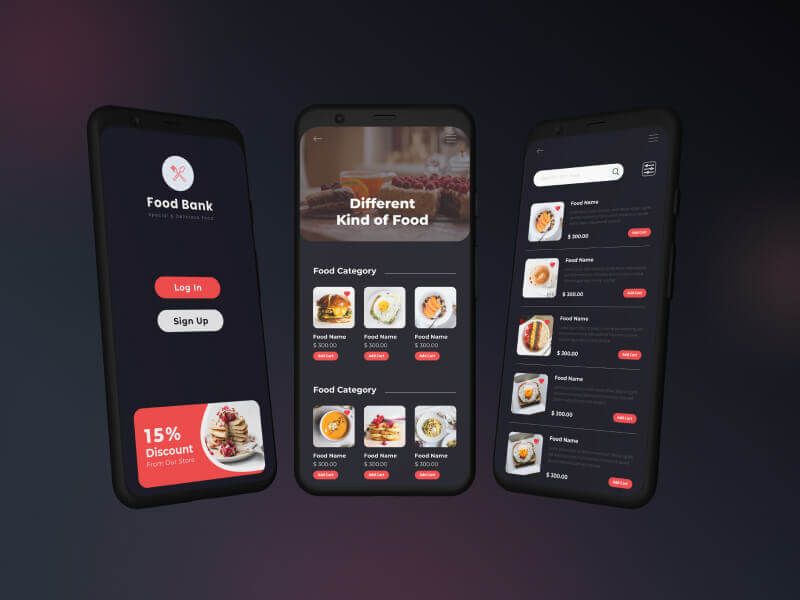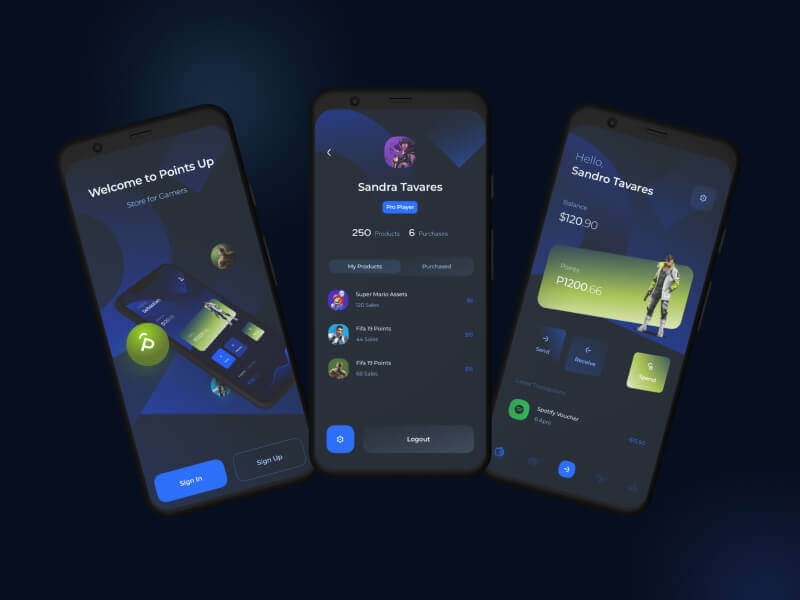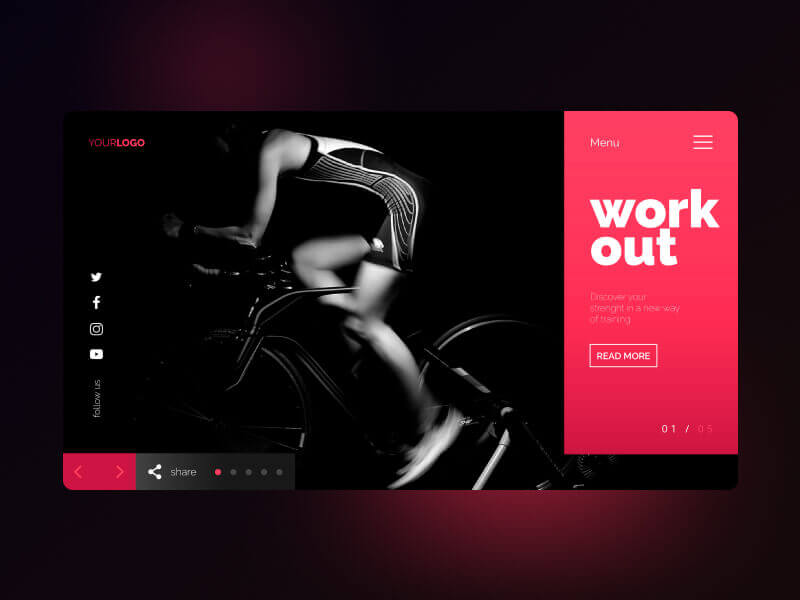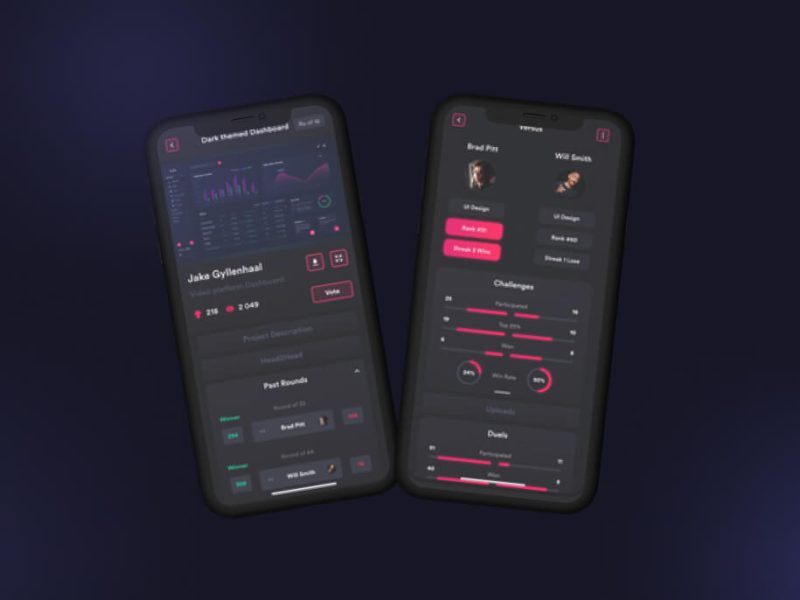Mobile Application Landing Page Design.
Through a wide variety of mobile applications, we’ve developed a unique visual system and strategy that can be applied across the spectrum of available applications.
Through a wide variety of mobile applications, we’ve developed a unique visual system and strategy that can be applied across the spectrum of available applications.
A strategy is a general plan to achieve one or more long-term.
UI/UX Design, Art Direction, A design is a plan or specification for art.
Fiverr
A mobile application landing page is a crucial element in the marketing strategy of any app, serving as the primary touchpoint where potential users first encounter the app. A well-designed landing page not only captures attention but also persuades visitors to take action, such as downloading the app or signing up for updates. Here’s an overview of key components and best practices for designing an effective mobile application landing page.
1. Clear and Compelling Headline: The headline is the first thing visitors see, so it should be concise and attention-grabbing. It needs to communicate the app’s main benefit or unique selling proposition clearly. This should be complemented by a subheadline or tagline that provides additional context or reinforces the app’s value.
2. Engaging Visuals: High-quality visuals, including screenshots, animations, or demo videos, are essential. They give visitors a glimpse of the app’s interface and functionality, showcasing its features and benefits. Visuals should be optimized for quick loading to maintain user engagement and prevent bounce rates.
3. Persuasive Copy: The content on the landing page should highlight the app’s key features and benefits in a way that resonates with the target audience. Use bullet points or short paragraphs to make the information easily digestible. Focus on how the app solves a problem or adds value to the user’s life.



4. Strong Call-to-Action (CTA): The CTA button is crucial for converting visitors into users. It should be prominently displayed and use action-oriented language like “Download Now,” “Get Started,” or “Try for Free.” The button should stand out visually, often through contrasting colors or prominent placement.
5. Social Proof and Testimonials: Incorporate user reviews, ratings, or testimonials to build credibility and trust. Positive feedback from existing users can be a powerful motivator for new visitors. Including logos of reputable brands or publications that have featured the app can also enhance trustworthiness.
6. Responsive Design: Ensure that the landing page is mobile-friendly and looks great on various devices and screen sizes. A responsive design ensures a seamless user experience, whether visitors are using smartphones, tablets, or desktops.
7. Simple Navigation: Keep navigation simple and intuitive. Avoid clutter and unnecessary links that might distract visitors from the primary goal of downloading the app. Provide clear, easy-to-follow pathways to the CTA.
8. Contact Information and Support: Offer ways for visitors to get in touch if they have questions or need support. This could include an email address, chat feature, or a link to a support page.
9. Analytics and Tracking: Implement tracking tools to monitor visitor behavior and measure the effectiveness of the landing page. Analyzing data such as conversion rates, bounce rates, and user interactions can provide insights for optimization.
10. A/B Testing: Conduct A/B testing on various elements of the landing page, such as headlines, visuals, and CTAs. Testing different versions helps identify what resonates best with your audience and drives higher conversion rates.

A mobile application landing page is a crucial element in the marketing strategy of any app, serving as the primary touchpoint where potential users first encounter the app. A well-designed landing page not only captures attention but also persuades visitors to take action, such as downloading the app or signing up for updates. Here’s an overview of key components and best practices for designing an effective mobile application landing page.
1. Clear and Compelling Headline: The headline is the first thing visitors see, so it should be concise and attention-grabbing. It needs to communicate the app’s main benefit or unique selling proposition clearly. This should be complemented by a subheadline or tagline that provides additional context or reinforces the app’s value.
2. Engaging Visuals: High-quality visuals, including screenshots, animations, or demo videos, are essential. They give visitors a glimpse of the app’s interface and functionality, showcasing its features and benefits. Visuals should be optimized for quick loading to maintain user engagement and prevent bounce rates.
3. Persuasive Copy: The content on the landing page should highlight the app’s key features and benefits in a way that resonates with the target audience. Use bullet points or short paragraphs to make the information easily digestible. Focus on how the app solves a problem or adds value to the user’s life.
4. Strong Call-to-Action (CTA): The CTA button is crucial for converting visitors into users. It should be prominently displayed and use action-oriented language like “Download Now,” “Get Started,” or “Try for Free.” The button should stand out visually, often through contrasting colors or prominent placement.
5. Social Proof and Testimonials: Incorporate user reviews, ratings, or testimonials to build credibility and trust. Positive feedback from existing users can be a powerful motivator for new visitors. Including logos of reputable brands or publications that have featured the app can also enhance trustworthiness.
6. Responsive Design: Ensure that the landing page is mobile-friendly and looks great on various devices and screen sizes. A responsive design ensures a seamless user experience, whether visitors are using smartphones, tablets, or desktops.
7. Simple Navigation: Keep navigation simple and intuitive. Avoid clutter and unnecessary links that might distract visitors from the primary goal of downloading the app. Provide clear, easy-to-follow pathways to the CTA.
8. Contact Information and Support: Offer ways for visitors to get in touch if they have questions or need support. This could include an email address, chat feature, or a link to a support page.
9. Analytics and Tracking: Implement tracking tools to monitor visitor behavior and measure the effectiveness of the landing page. Analyzing data such as conversion rates, bounce rates, and user interactions can provide insights for optimization.
10. A/B Testing: Conduct A/B testing on various elements of the landing page, such as headlines, visuals, and CTAs. Testing different versions helps identify what resonates best with your audience and drives higher conversion rates.
In summary, a well-crafted mobile application landing page is a powerful marketing tool that can significantly impact app downloads and user engagement. By focusing on clear messaging, engaging visuals, and effective CTAs, and by continuously optimizing based on user feedback and analytics, you can create a landing page that effectively converts visitors into loyal users.
Through a wide variety of mobile applications, we’ve developed a unique visual system.
There are always some stocks, which illusively scale lofty heights in a given time period. However, the good show doesn’t last for these overblown toxic stocks as their current price is not justified by their fundamental strength.
A strategy is a general plan to achieve one or more long-term. labore et dolore magna aliqua.
UI/UX Design, Art Direction, A design is a plan or specification for art. which illusively scale lofty heights.
User experience (UX) design is the process design teams use to create products that provide.
Toxic companies are usually characterized by huge debt loads and are vulnerable to external shocks. Accurately identifying such bloated stocks and getting rid of them at the right time can protect your portfolio.
Overpricing of these toxic stocks can be attributed to either an irrational enthusiasm surrounding them or some serious fundamental drawbacks. If you own such bubble stocks for an inordinate period of time, you are bound to see a massive erosion of wealth.


However, if you can precisely spot such toxic stocks, you may gain by resorting to an investing strategy called short selling. This strategy allows one to sell a stock first and then buy it when the price falls.
While short selling excels in bear markets, it typically loses money in bull markets.
So, just like identifying stocks with growth potential, pinpointing toxic stocks and offloading them at the right time is crucial to guard one’s portfolio from big losses or make profits by short selling them. Heska Corporation HSKA, Tandem Diabetes Care, Inc. TNDM, Credit Suisse Group CS,Zalando SE ZLNDY and Las Vegas Sands LVS are a few such toxic stocks.Screening Criteria
Here is a winning strategy that will help you to identify overhyped toxic stocks:
Most recent Debt/Equity Ratio greater than the median industry average: High debt/equity ratio implies high leverage. High leverage indicates a huge level of repayment that the company has to make in connection with the debt amount.
Hello

